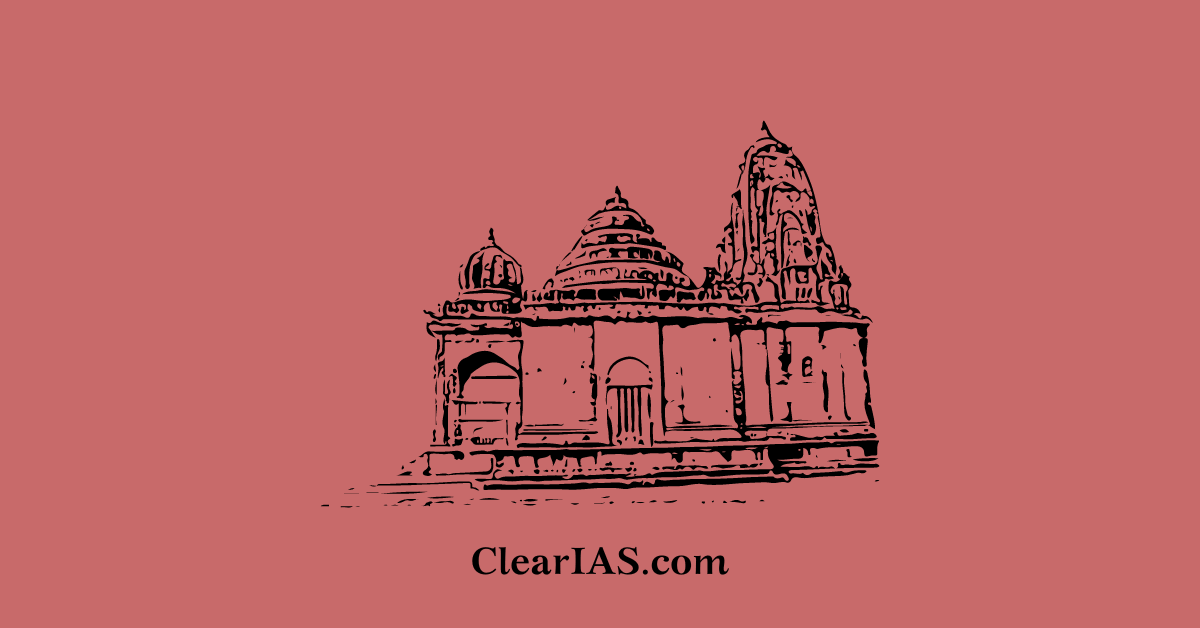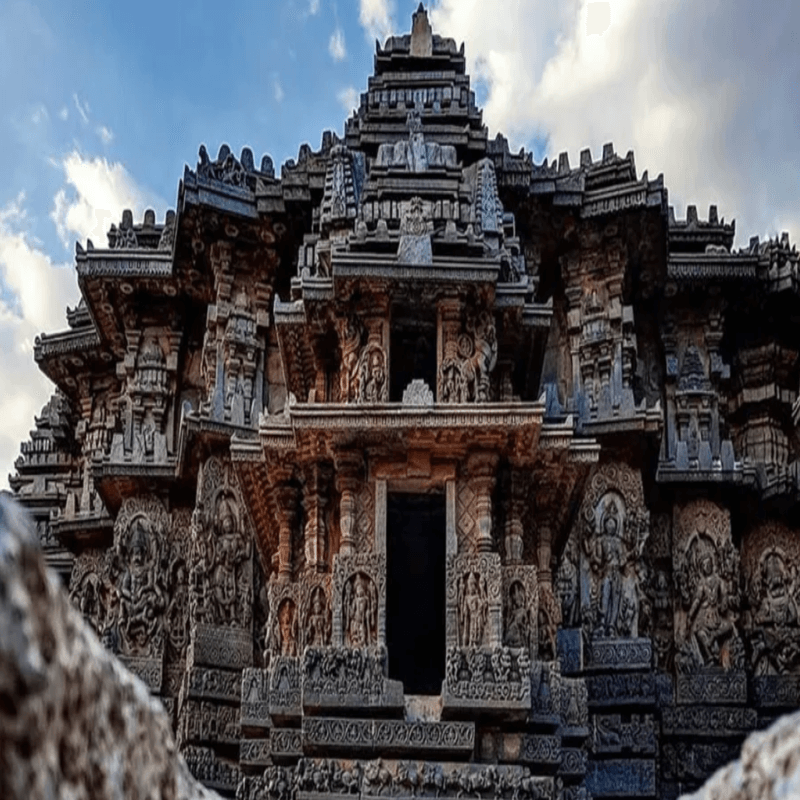
Hoysala art and architecture are celebrated for their aesthetic beauty, intricate detailing, and the exceptional skill of the artisans who created them. The temples constructed during the Hoysala period continue to be marvels of Indian architecture and are important cultural and historical landmarks in southern India. Read here to learn more.
In our article series on Indian culture, we have so far seen the temple architecture peculiarities of the Chola and Chalukya Dynasty. In this post, we shall see the temple architecture features of the Hoysala dynasty.
The Karnata Dravidian tradition developed in the 7th century under the patronage of Badami Chalukya got matured under Western Chalukya (Kalyani Chalukya) in the 11th century. The Chalukya style became perfect as an independent style under Hoysala’s rule in the 13th century.
Hoysala Architecture

The Hoysalas were prolific builders of Hindu temples, and their architecture is often described as “temple-centric.” They constructed numerous temples dedicated to deities like Lord Shiva, Lord Vishnu, and various forms of the Goddess.
One of the distinctive features of Hoysala architecture is the star-shaped ground plan of many of their temples. These star-shaped temples have multiple shrines placed symmetrically, creating a unique and intricate layout.
The Hoysalas primarily used soapstone (chloritic schist) as their primary building material. This soft stone allowed for intricate carving and detailing.
- The hallmark of Hoysala architecture is its incredibly detailed and ornate carvings. These carvings adorn almost every surface of the temples, depicting scenes from Hindu mythology, deities, celestial beings, animals, and intricate geometric patterns.
- The sculptures often feature various forms of Lord Vishnu (especially Chennakesava) and Lord Shiva. The Chennakesava Temple in Belur and the Hoysaleswara Temple in Halebidu are famous examples of such carvings.
Noticeable features of Hoysala art
- Makartorana: It leads to the mantapa of the temples. It is made with sculpted images of Makara in lintel form overhead to the temple.
- Mantapa : Hoysala temples have features of both open (outer mantapa) and closed mantapa (innner mantapa). The ceilings of the mantapa are highly ornate bearing mythological figures and floral design.
- Pillars: The mantapas of Hoysala temples have circular pillars. Each pillar bears four brackets at the top with sculpted figures.
- Cella (vimana): The characteristic feature of vimana in Hoysala temples is that they are plain inside while outside is profusely elaborated.
- Shrine: The Hoysala temples generally bear one or more shrines. The temples are classified as ekakuta (one shrine), dvikuta (two shrines), etc. relating to the number of shrines.
- Development of Kalasa: The Hoysala temples bear a very nice vase-shaped water pot that stands on the topmost portion of the temple tower.
- Salabhanjika: It is the peculiar feature of Hoysala sculpture. The origin of this mythical woman figure traces back its origin from the Buddhist sculpture. Salabhanjika or madanika is a mythical woman figure with stylized feminine characters who stands near a tree or grasping a branch of a tree. Sometimes, they are portrayed engaging in artistic activities like music, dance, etc.
These sculpted figures are seen in each four brackets that are placed on the top of the pillars of Hoysala temples. Besides this, each side of the makartorana is heavily sculpted with figures of salabhanjika. - Kirtimukh: The figure of kirtimukhh ornates the vimana of some Hoysala temples.
- Mythical presentation: No other dynasty had been able to present Hindu mythology in sculpted and architectural form than the Hoysala dynasty. The pictures from Ramayana, Mahabharata, and Puranas are very vigorously decorated on the walls of the Hoysala temples. At the entrance of the makartorana, various scenes are sequentially depicted from Hindu mythology in a clockwise direction.
- General decoration: Besides mythical presentation, the walls of Hoysala temples are decorated with live panels of musicians, dancers, animals, etc.
- Artistic plan: The shrines of the temples are generally seen in stellate shape though sometimes the staggered square plan is visible.
- Erotica: In some temples, erotic sculptures are seen swayed by the Sakta tradition prevailing at that time.
Influence of Chola and Chalukya art
The decoration of the Western Chalukyas (Kalyani) influenced the Hoysala decoration. The pillar image called “Sthambha buttalikas” seen in Hoysala art bears evidence of Chola and Chalukya art.
- In Chennakeshava temple, the image of Mohini seen in one of the pillars in the mandapa bears a fine example of Chola art in Hoysala art.
- The Hoysala artists ornamented both the top and surface of the pillars while Chalukya artists left the top plain and decorated only the surface.
Questions to try (100 words)
- The Hindu temple architecture under Hoysalas is marked by the influence of Buddhist art too. Comment.
- What is makara? Narrate its importance in Indian architecture in its zoomorphic form.
- Write a short note on the decoration of Hoysala temples.
- What is Salabhanjika? Explain its relevance in Hindu temple architecture.
- Influence of Chola and Chalukya in Hoysala art
- Short note on Makartorana
- Short note on: Sthambha buttalika
- Short note on Stellate plan
- Short note on Mohini in Indian sculpture
Article by : Samiran Saikia






Thank you .. You r effort is really appreciated 🙂
Thanks for your support 🙂
Thanq,for your support…
Very effective support for the serious Civil aspirations
Thank you for this information